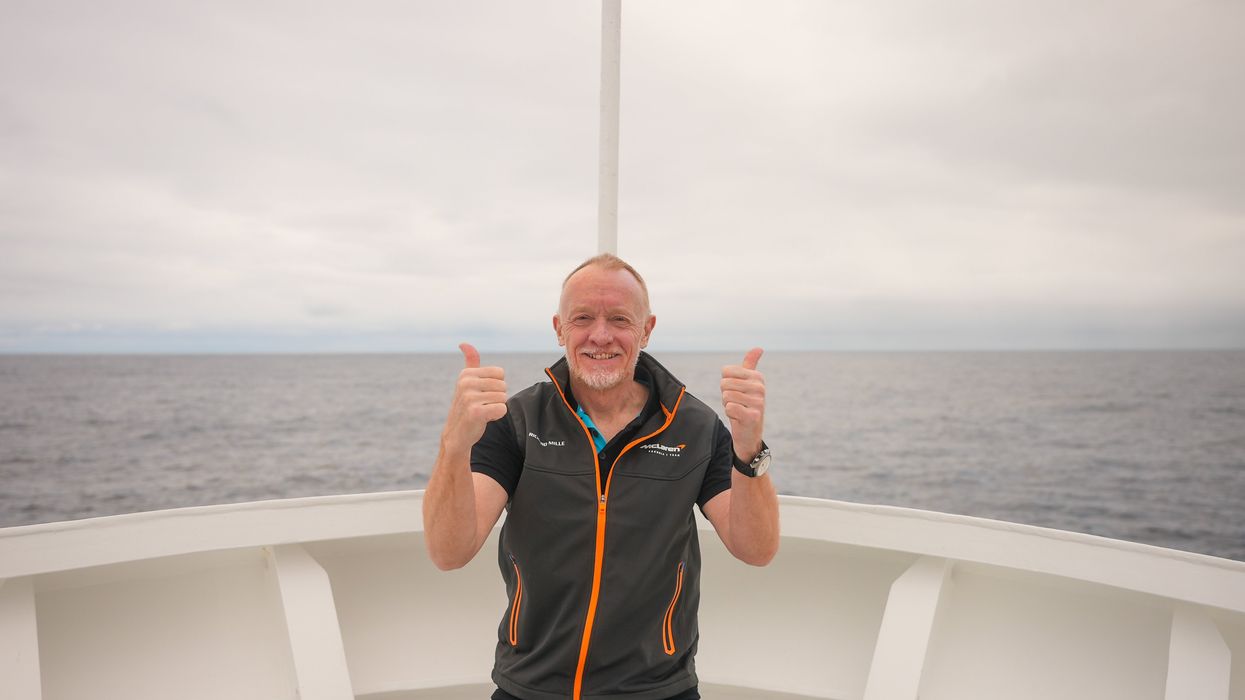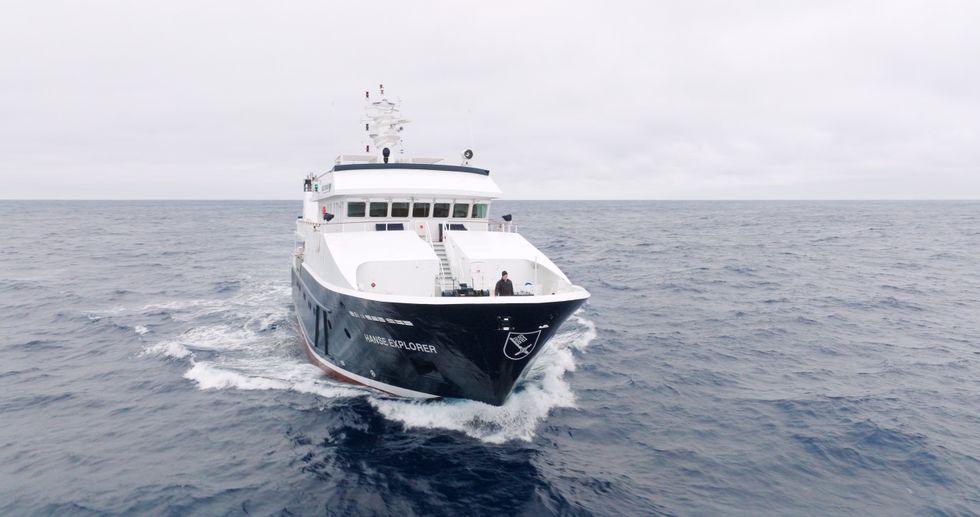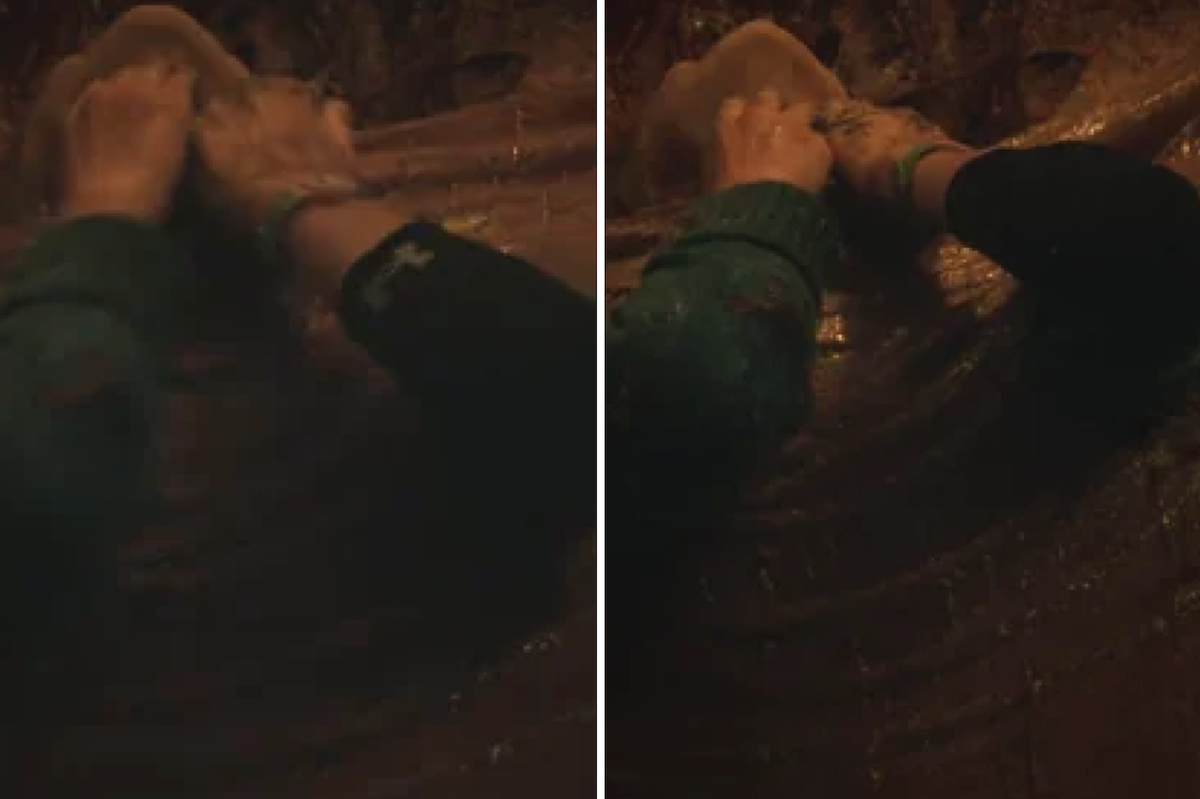Harry Fletcher
Mar 18, 2024

Jam Press
Explorer Chris Brown is close to becoming the first Brit to complete a specific expedition to Point Nemo – the most remote place on Earth.
Maritime professionals have stated that “it is possible that no human has ever passed through the specific coordinates”.
The entrepreneur and his son Mika, 30, are on their way to the site, which is in the middle of the Pacific, having left Puerto Montt in Chile last Tuesday (12 March).
The 62-year-old from Harrogate, North Yorkshire has already visited five of Earth’s eight continental Poles of Inaccessibility (PIA) in Antarctica, Australasia, Africa, North America and South America and shares his adventures on inaccessibility.net.
Chris aim is to be the first person to visit all eight PIAs, including Point Nemo – which is also known as the Oceanic Pole of Inaccessibility.
The pair hope to arrive at Nemo, the point furthest from land in any direction, around the 20 or 21 March.
The father-of-two isn’t daunted by the dangers of visiting a place where few, if any, humans have ever been before.
“I don’t consider this to be as dangerous as my expeditions to Africa or Antarctica,” he said.
“The obvious danger is that you’re miles from anywhere on the sea, and you're going to be a long way from any of the shipping lanes so if there was a problem with the boat, help would be a long time coming.”
The nearest humans to Nemo are astronauts in the International Space Station which is ‘just’ 408 km above the spot in low Earth orbit.
Though occasional research boats and participants in the world yacht races have come close to reaching the point, too.
Chris, who logs his expeditions on TikTok (@chrisbrownexplores), added: “I’ve been planning this trip for around five years and finally got firm action plans in place over the last six months.
“I looked at different methods of getting to Point Nemo.
“Racing yachts can obviously get there quicker as they'll be lighter.
“But you're going to experience tough conditions at 48 degrees south, I’d prefer something a bit more robust.
“I thought about tankers but it’s not a recognised shipping route, so there's nothing that can go that way.
“I then came across this boat called the Hanse Explorer, which normally takes people down to Antarctica.
“Coincidentally, it is repositioning after the Antarctic summer, which is our winter, from Chile to French Polynesia.
“And that means it will be going fairly close to where we want to be.
“After a bit of negotiation, the owners agreed to our slight detour.”
When Chris arrives at Nemo he plans to go for a swim, if the waters are calm enough and the captain agrees it is safe.
The sea depth at Point Nemo is approximately 4,000m and the surface temperature is expected to be around 7°C.
He added: “I'm going to try and get in the water if it's at all possible.
“The Hanse Explorer has Zodiac inflatable ribs that we might be able to launch, and I’ll jump in from one of those.
“I also expect I’ll open a bottle of bubbly when I get there.”
When Chris is at Point Nemo, the nearest land will be 2,688km away with the Pitcairn Islands, Moto Nui in the Easter Islands and Maher Island in Antarctica the closest.
Point Nemo is in an area called The South Pacific Gyre which is a complex system of rotating currents in the Pacific; a convergence of The Antarctic Circumpolar Current, the Humboldt Current and the West Wind Drift.
As a result, lots of oceanic debris gets caught in the system and makes this area of the Pacific a sort-of oceanic garbage patch.
There are believed to be no fish or other marine life in the area with the lack of nutrients making it difficult for even the hardiest species to survive.
Currently, only bacteria and tiny crabs have been discovered to live in the volcanic vents on the seafloor near Point Nemo.
Scientists have described it as “the least biologically active region of the world’s oceans”.
The coordinates are 48º52.6S, 123º23.6W.
Chris and his team plan to take water samples at and on the way to the pole of inaccessibility in order to study the density of microplastics in this most-remote location in the oceans.
Point Nemo is named after the famous Captain from Jules Verne’s Twenty Thousand Leagues Under the Sea and Nemo actually means “no one” in Latin.
Whilst the location has always existed, its relevance has only been known since 1992 when Croatian-Canadian survey engineer Hrvoje Lukatela used a geo-spatial computer program that incorporated the planet’s ellipsoid shape to calculate the point furthest from land.
The first ship to sail close to the site was the Spanish research vessel Hespérides in 1999.
Ocean race competitors approach Point Nemo in the leg between Auckland, New Zealand and Itajaí, Brazil.
It is not a ‘mark’ so the boats only need to be ‘close’ to the point.
More than 100 pieces of space junk have been brought back down to Earth close to Point Nemo including the remnants of the Russian Mir Space Station.
Chris hit the headlines around the world in June last year (2023) when it emerged he pulled out of a trip to the wreck of the Titanic on the doomed Titan submersible amid safety concerns.
He is yet to visit the Northern and Eurasian Poles of InaccessIbility.
Sign up for our free indy100 weekly newsletter
How to join the indy100's free WhatsApp channel
Have your say in our news democracy. Click the upvote icon at the top of the page to help raise this article through the indy100 rankings
Top 100
The Conversation (0)














